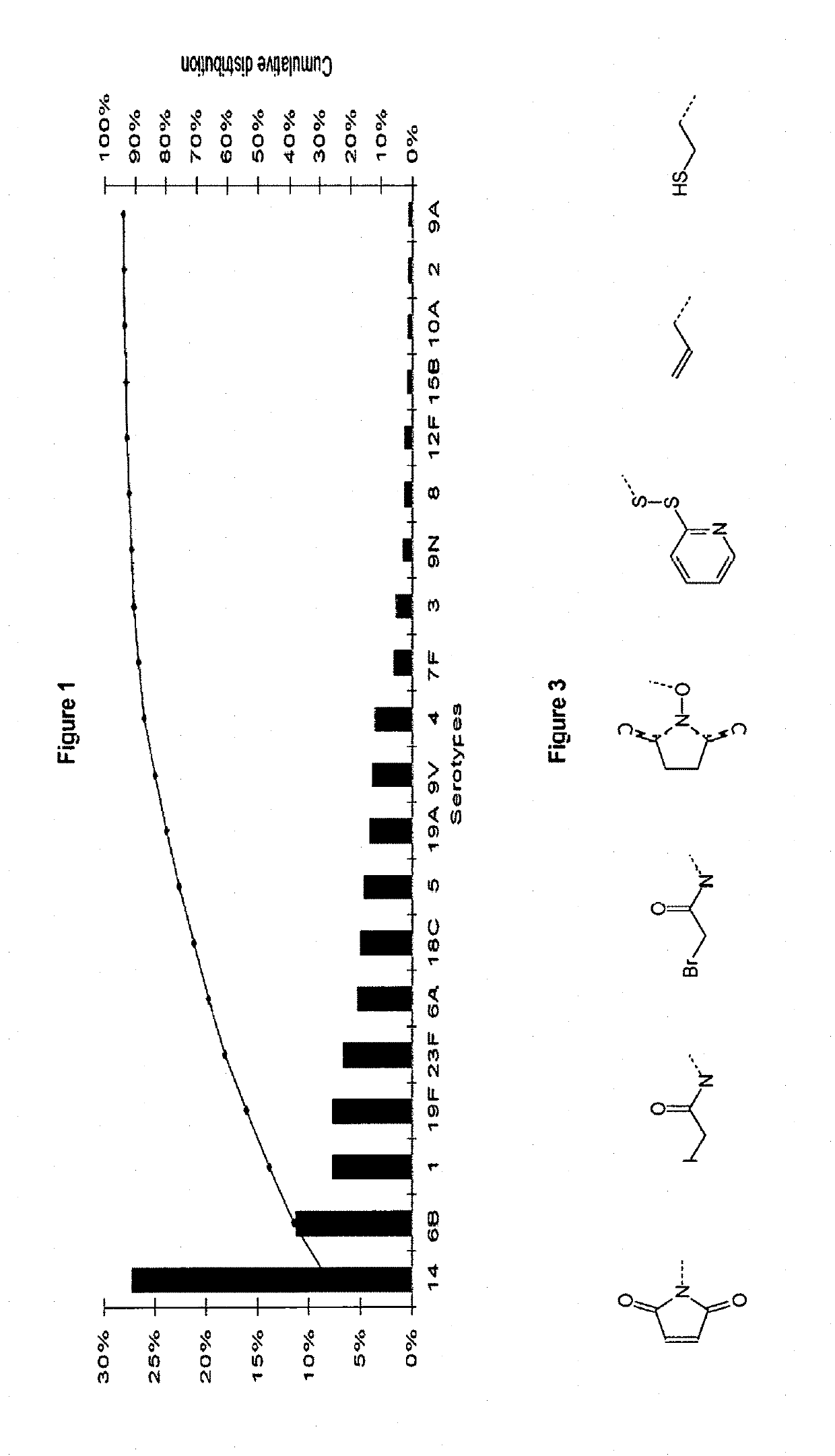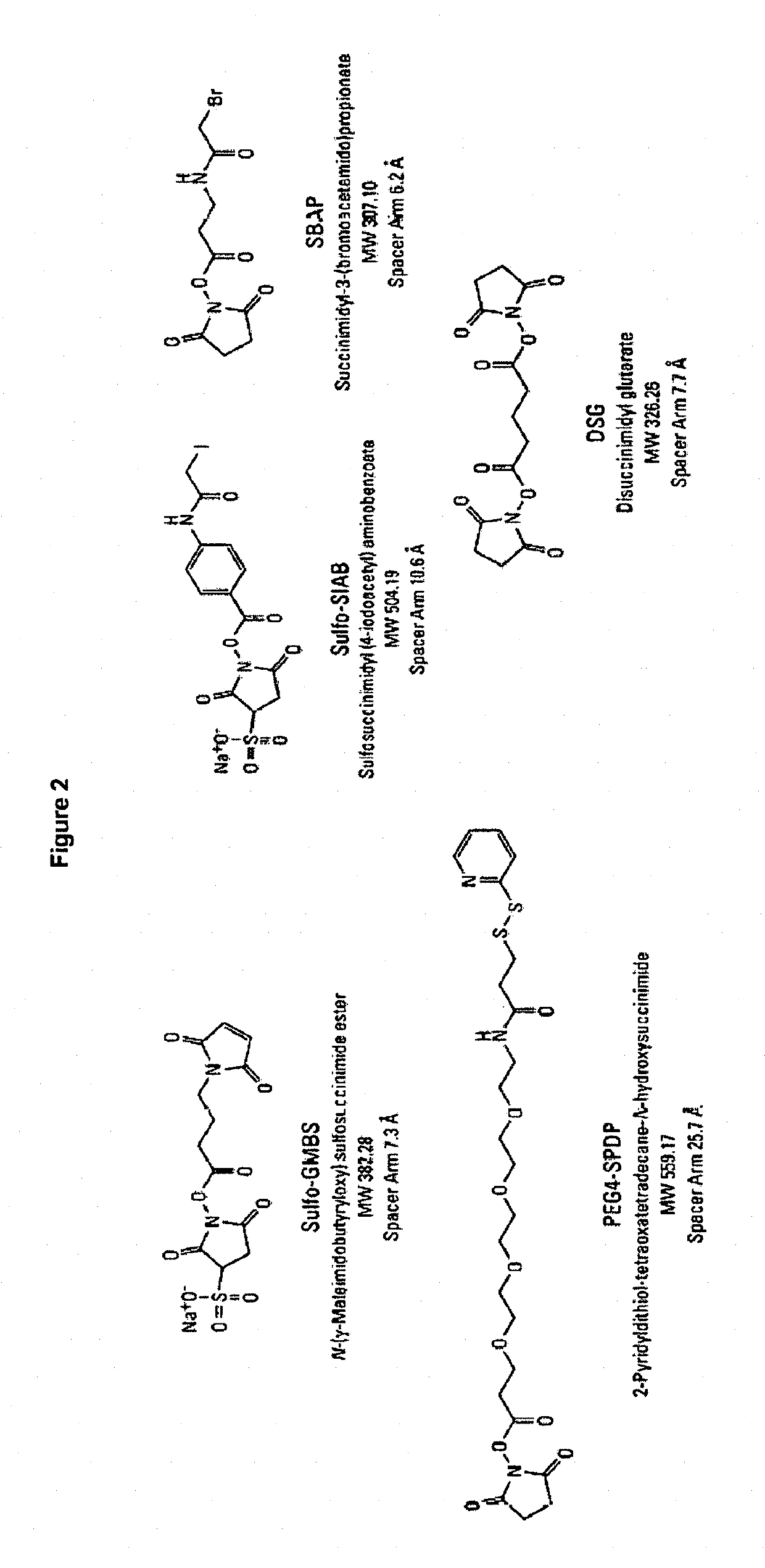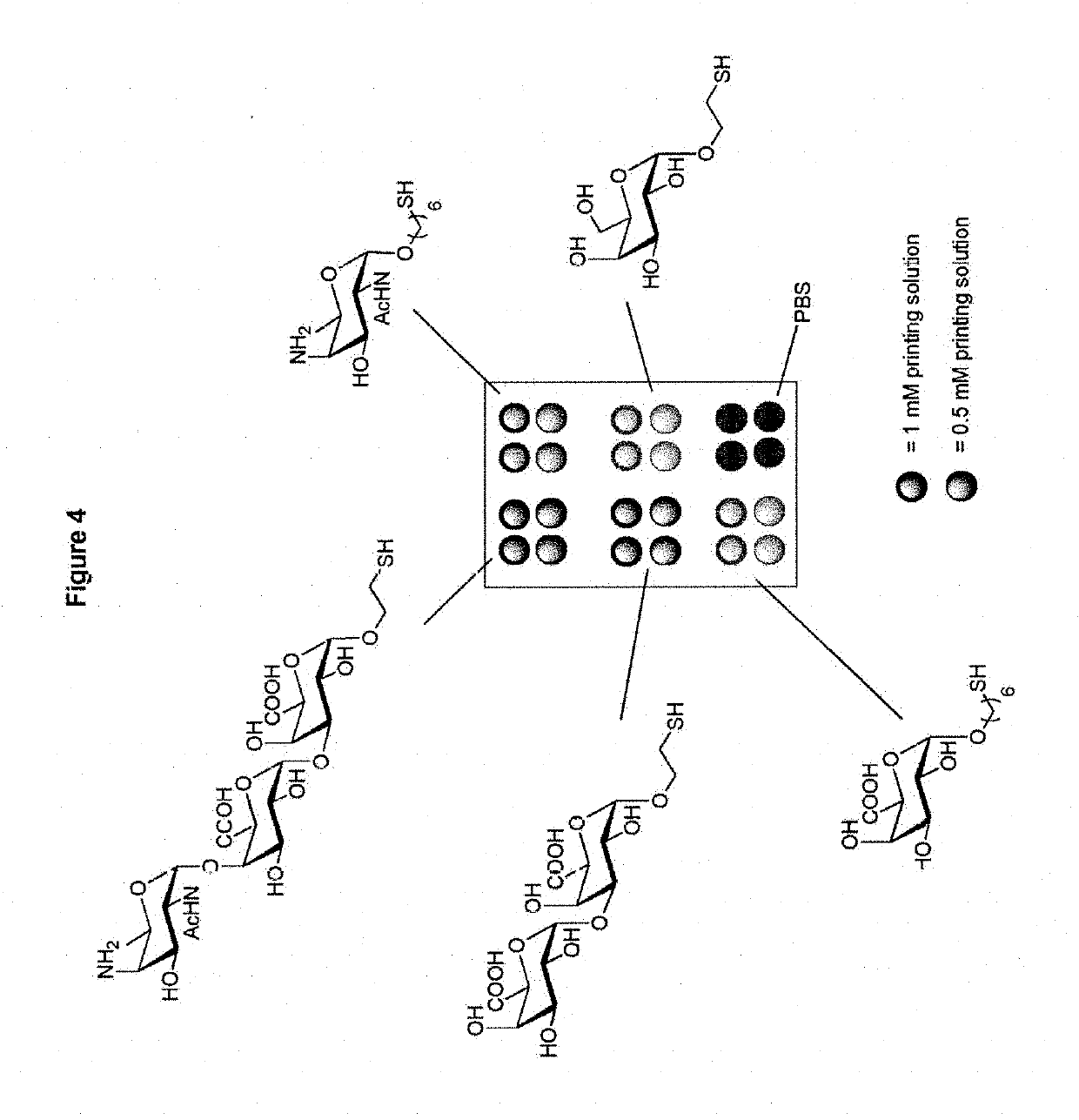Synthetic vaccines against Streptococcus pneumoniae type 1
a technology of streptococcus pneumoniae and synthetic vaccines, which is applied in the field of synthetic vaccines against i > streptococcus pneumoniae /i > type 1; it can solve the problems of unaffordable vaccines in most developing countries, high price, and ineffective vaccines in infants and young children
- Summary
- Abstract
- Description
- Claims
- Application Information
AI Technical Summary
Benefits of technology
Problems solved by technology
Method used
Image
Examples
example 1
4-(Benzyloxycarbonyl)amino-3-O-levulinoyl-4,6-dideoxy-D-galactal (1*)
[0576]
[0577]To a stirred solution of 4-O-(benzyloxycarbonyl)amino-3-hydroxy-4,6-dideoxy-D-galactal (Org. Lett. 2010, 12, 1624) (1.64 g, 6.21 mmol) (1.64 g, 6.21 mmol) in CH2Cl2 (40 ml) were added at 0° C. pyridine (0.501 ml, 6.21 mmol), levulinic acid (0.96 ml, 9.31 mmol), DMAP (0.152 g, 1.242 mmol) and EDC (1.205 ml, 6.83 mmol). The mixture was warmed to room temperature and stirred at that temperature. After 3 h, 0.5 eq. levulinic acid and 0.5 eq. EDC were added to drive the reaction to completion. After 5 h, the mixture was diluted with 100 ml DCM and washed with water (50 ml), sat. aq. NH4Cl (50 ml), sat. aq. NaHCO3 (50 ml) and brine (50 ml). The organic fraction was dried over Na2SO4 and concentrated. The residue was purified by flash chromatography (EtOAc / hexanes 1:1) to give ester 1* (2.07 g, 5.73 mmol, 92%) as a clear oil. HRMS (ESI) calcd for C19H23NO6 (M+Na+) 384.1423. found 384.1415 m / z.
example 2
Dibutyl [2-azido-4-(benzyloxycarbonyl)amino-3-O-levulinoyl-2,4,6-trideoxy-D-galactopyranosyl] phosphate (2*)
[0578]
[0579]To a stirred solution of galactal 1* (3.17 g, 8.77 mmol) in dry MeCN (44 ml) were added at −25° C. ceric ammonium nitrate (14.42 g, 26.3 mmol) and sodium azide (0.86 g, 13.15 mmol). The reaction was stirred vigorously between −25° C. and −20° C. for 6 h. The mixture was diluted with cold Et2O (50 ml). The organic layer was washed with cold water (3×30 ml), dried over Na2SO4 and concentrated. The residue was filtered through a plug of silica gel (EtOAc / hexanes / Et3N 1:1:0.01) to give the crude glycosyl nitrate as 4:1 galactoltalo mixture (2.01 g) as a slightly yellow oil.
[0580]To the crude glycosyl nitrate (2.01 g) was added at room temperature a solution of cesium dibutyl phosphate (2.21 g, 6.45 mmol) in dry DMF (28 ml). The mixture was stirred at that temperature for 4.5 h, diluted with EtOAc (100 ml) and poured into water (100 ml). The organic phase was washed wit...
example 3
Ethyl 2-O-benzyl-3,4-isopropylidene-1-thio-β-D-galactopyranoside (3*)
[0581]
[0582]To a stirred solution of ethyl 6-O-tert-butyldimethylsilyl-3,4-isopropylidene-1-thio-β-D-galactopyranoside (Bioorg. Med. Chem. 2001, 9, 1395) (45.7 g, 121 mmol) in DMF (150 ml) and THF (75 ml) were added at 0° C. portionwise sodium hydride (60%, 7.24 g, 181 mmol) and then benzyl bromide (17.2 ml, 145 mmol). The mixture was stirred for 1 h at 0° C., slowly warmed to room temperature and stirred for 16 h at that temperature. The reaction was quenched at 0° C. with sat. aq. NH4Cl (20 ml), diluted with water (200 ml) and EtOAc (150 ml) and stirred for 15 min at 0° C. After separation, the organic phase was washed with water (5×100 ml) and the combined aqueous fractions were re-extracted with EtOAc (2×100 ml). The combined organic extracts were dried over Na2SO4 and concentrated to give the crude benzyl ether (61 g) as a yellow oil.
[0583]To a stirred solution of the crude benzyl ether (61 g) in THF (370 ml) ...
PUM
| Property | Measurement | Unit |
|---|---|---|
| diameter | aaaaa | aaaaa |
| diameter | aaaaa | aaaaa |
| diameter | aaaaa | aaaaa |
Abstract
Description
Claims
Application Information
 Login to View More
Login to View More - R&D
- Intellectual Property
- Life Sciences
- Materials
- Tech Scout
- Unparalleled Data Quality
- Higher Quality Content
- 60% Fewer Hallucinations
Browse by: Latest US Patents, China's latest patents, Technical Efficacy Thesaurus, Application Domain, Technology Topic, Popular Technical Reports.
© 2025 PatSnap. All rights reserved.Legal|Privacy policy|Modern Slavery Act Transparency Statement|Sitemap|About US| Contact US: help@patsnap.com



